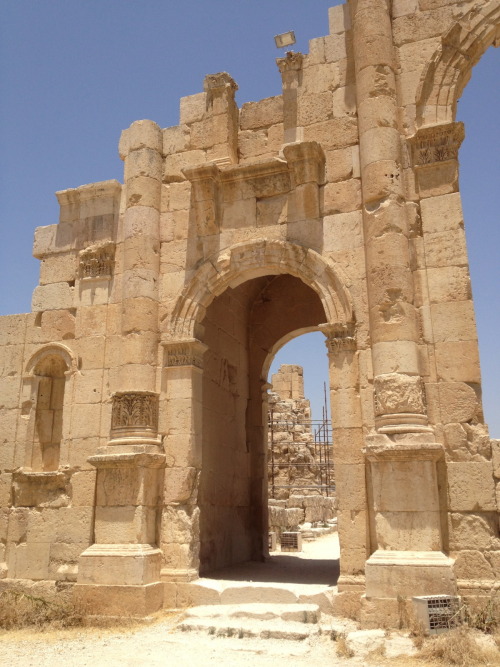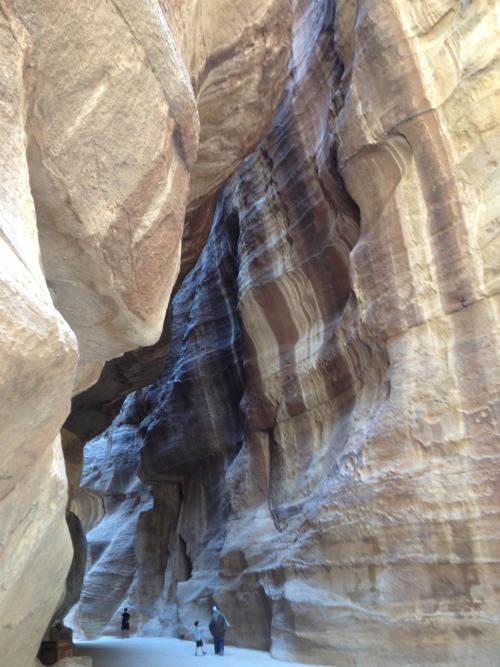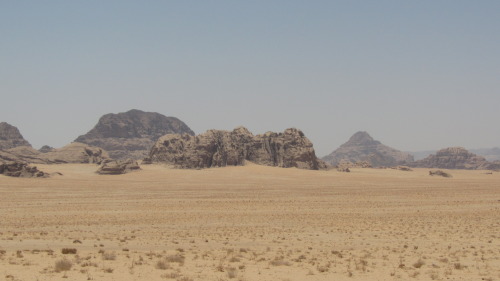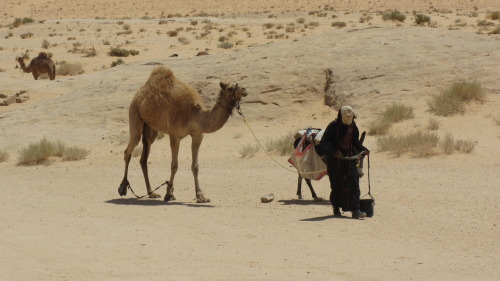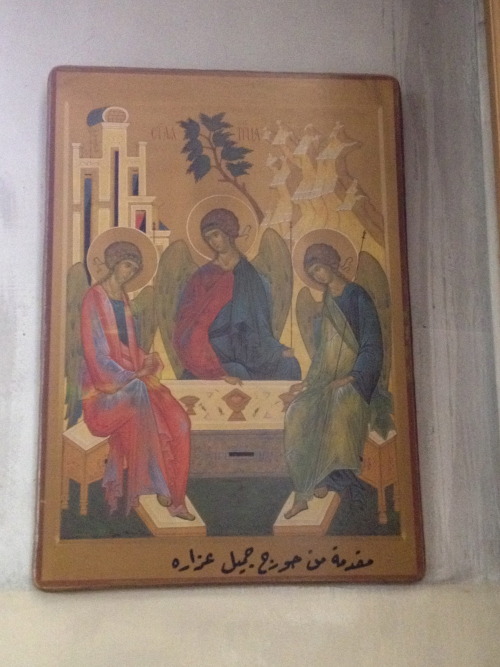Jordan, Space and Time.
 Wednesday, June 20, 2012 at 12:44PM
Wednesday, June 20, 2012 at 12:44PM After a four day visit to Jordan, I find myself reflecting again on time and space.
Time was once viewed as being merely linear, with past, present and future. Jordan offers the visitor a perfect opportunity to find out more about past ages by visiting its many historical sites.
Jerash, one of the sites visited on our first day, is considered to be one of the most well preserved sites of Roman architecture outside of Italy and has its origin more than 2000 years ago.
After passing through the gate of the city the opportunity exists to witness a chariot race and gladiator fight in a Roman setting. A walk along the cobbled streets with its columns, baths, theaters and temples allows one to picture times gone by.
I was not able to lose myself in imagining life in those times for too long, however, as the blazing heat of that afternoon was a strong reminder to me that I am a citizen of another century. My longing for air-conditioning as I was overcome by the heat, brought me back to the present with a jolt.
After Jerash, we made our way to Wadi Musa, a little town just outside of Petra, a world heritage site and one of the seven wonders of the world. The whole city of Petra was carved out of the rock face by the Nabataens in the 6th century BC, but settlements began there many centuries before that.
Our first visit to Petra was at night, along a candle lit path as far as the Treasury. The unknown route through the siq, a deep split in the sandstone rocks, required careful attention to each step, and each step along the way was a reminder that time is not only linear, but can also be experienced sequentially, from moment to moment, on and on and on.
Setting off really early the next morning, before the majority of the tourists, we were alone as we made our way to visit the whole city of Petra. We were able to see what had been above us the night before. The focus of our attention now, was space not time, as the sides of the siq towered above us. Appearing rather tiny in these surroundings, we were clearly separate from the space being inhabited.
Space, however, can be more than just physical. It can also be experiential.
A visit to Wadi Rum, a vast valley in the desert with uniquely shaped mountains rising out of the desert sand, provides such an experience. One easily forgets to think of the self when faced with such beauty and such vastness. Space, like time, can also take on a fluidity, stretching on and on.
While being served Bedouin tea by our guide, we suddenly saw an eagle rise above the mountain before us. We were told that this was very unusual for this time of day, as they usually are spotted at sunrise and sunset. Earlier, when we were being shown a well, we had also seen a Bedouin lady with her camel, goats and dogs appear out of what seemed nowhere. Time and space was definitely more fluid in this desert.
On our last day in Jordan we visited Mount Nebo as well as the Dead Sea, the lowest place on the earth. As we wound our way by car from over 700 metres above sea level to 423 metres below sea level I remembered reading and being deeply touched by Karen Armstrong’s description of this drive in her book, “The Spiral Staircase”. I quote it here:
“With my ears popping as we passed sea level and continued our descent to the Dead Sea, the deepest spot in the world, I gazed at the extraordinary beauty of the desert and felt moved as I had never been before by any landscape. I could not drag my eyes away from it and felt a great silence opening within me. There were no words and no thoughts; it was enough simply to be there. Perhaps other people found this quietness in prayer, but there was no God here and nothing like the ecstasies experienced by the saints. Instead there was simply a suspension of self”.
Two experiences stand out for me in Jordan. On our first night in Wadi Musa, we had dinner on the rooftop of our hotel. Usually sensitive to the energy of a place, on this night I immediately became aware of feeling something I could not put my finger on. I mentioned it as being strange, not in a weird way, but because I was not able to describe what I was feeling. After a while, I just let it be and continued to enjoy the evening. On the second night in Wadi Musa, the minute we sat down on the rooftop again, the feeling returned.
I have thought about it much since our return. Surrounded on all sides by hilly mountains and ancient sites as the sun went down, I suspect that I caught a glimpse of what I can only now attempt to describe as timeless space - a dimension beyond the other dimensions of time and space I have attempted to describe above, and a dimension which words cannot adequately explain. Perhaps it was a glimpse of the silence and the suspension of self, Karen Armstrong had written of. Perhaps it was a glimpse of the fourth dimension referred to in quantum physics. I only have a sense of knowing that it was a realm which seemed to contain all.
The second experience was in the ancient church of St George, a Greek Orthodox Church in the city of Madaba, our last stop before heading for the airport. At the back of the church, famous for its mosaic map constructed in AD 560, there was a small but beautiful stained glass window that drew my attention. I walked closer to it, only to discover that on the wall next to the window was a version of my favorite icon by Rublev, The Holy Trinity. I have written about my love of this icon before, and also about my evolving relationship with it. As I looked upon this version with an inscription in Arabic which I have not yet managed to find the meaning of, it was as if I was spiralling back above the icon yet again.
The icon has references to time, space and knowledge, and it has an invitation to sit down at the table. Seeing a version of my favorite icon when and where I had least expected to encounter it, was very special.
Perhaps I should not have been surprised at all.
 Dead Sea,
Dead Sea,  Jerash,
Jerash,  Jordan,
Jordan,  Karen Armstrong,
Karen Armstrong,  Madaba,
Madaba,  Mount Nebo,
Mount Nebo,  Petra,
Petra,  Wadi Musa,
Wadi Musa,  Wadi Rum,
Wadi Rum,  place,
place,  space,
space,  time in
time in  culture,
culture,  perspective,
perspective,  place,
place,  time
time  Email Article
Email Article 